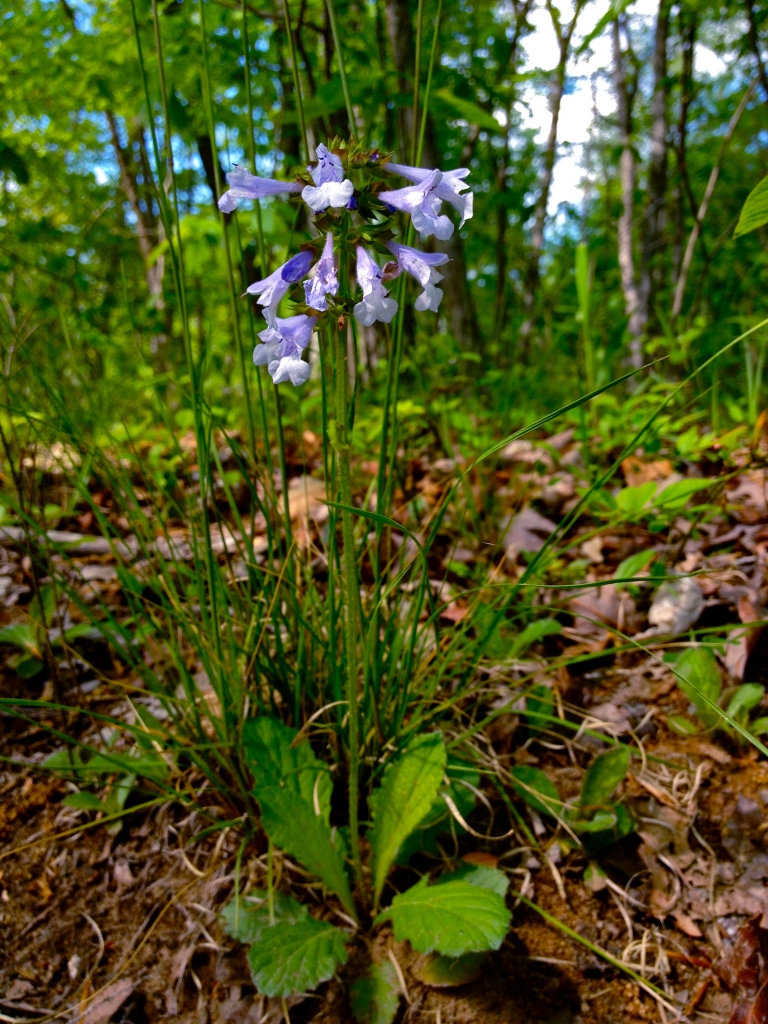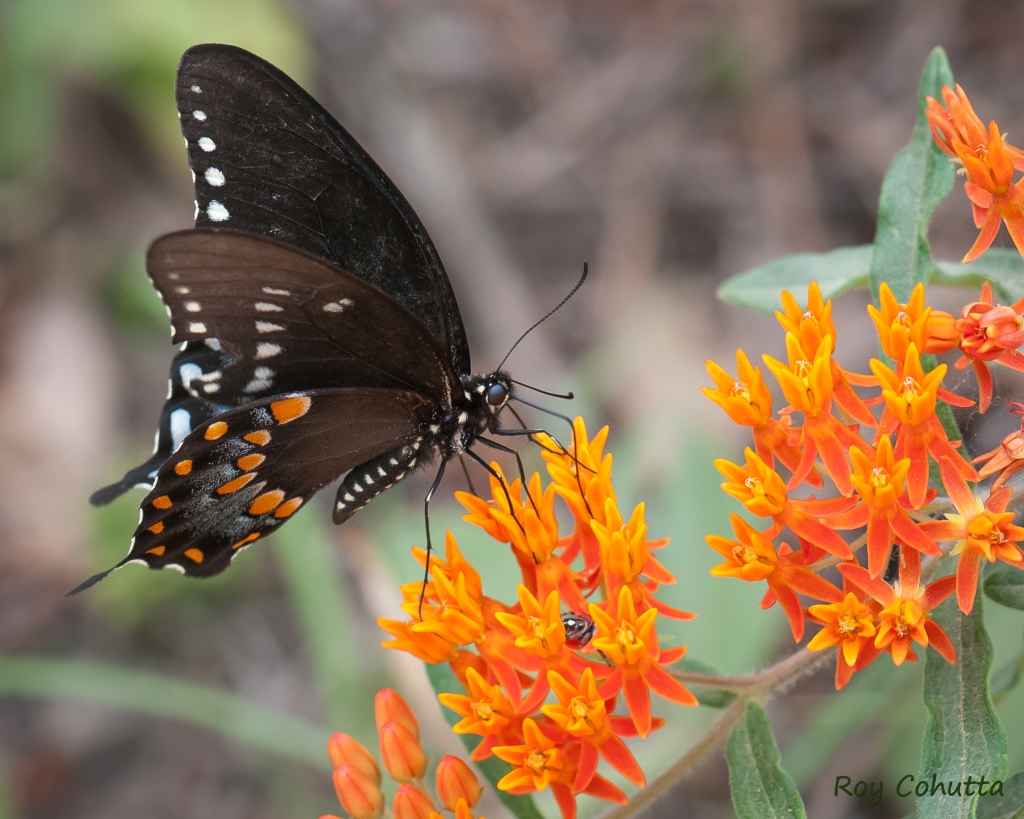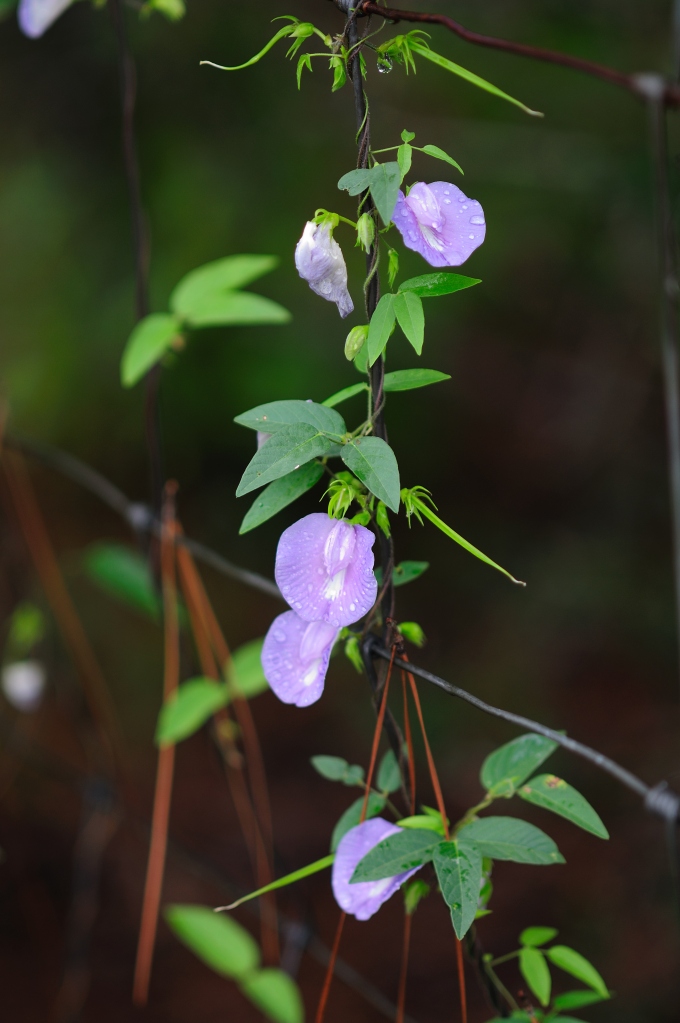Many areas in the Southeast, including where I live, are prone to drought. It may seem surprising, but water is a finite resource and it is only going to become more scarce in the future. That’s part of the reason why it is so important to plant native plants, which are already adapted to local climates, including drought. Here are 17 drought tolerant plants that bloom in the spring to help out those early-emerging pollinators.
Ground Covers
Pussytoes (Antennaria plantaginifolia)
This is one of my favorite native ground covers and they are seemingly indestructible! Pussytoes are super drought- and heat-tolerant and also generally left alone by rabbits and deer. They are the larval host for the American Painted Lady butterfly and easy to grow from seed. Their name comes from the fact that the flowers are reminiscent of cat paws.

Lyreleaf Sage not only tolerates drought, but also heat, humidity, being walked on, and being mowed over, making it a great choice for a lawn alternative. The basal leaves are evergreen with a purple tinge and somewhat resistant to deer, and the flowers are popular with butterflies.
Hairy Phlox can be difficult to find for sale in nurseries, but the hunt is worth it. This species of Phlox prefers dry, rocky soil in contrast with many other Phlox species, making it an excellent choice for a drought-tolerant garden. It has very showy pink or purple blooms and best blooming occurs in full sun, though it can tolerate part shade. If you can’t find Hairy Phlox for sale, Downy Phlox (Phlox pilosa) is a very good substitute.

Wild Sweet William (Phlox divaricata)
Wild Sweet William is also sometimes called woodland phlox due to the fact it is often found growing under shady trees. It makes a nice ground cover for part shade sites, and the flowers come in shades of lavender, blue, and even sometimes pink. It may not grow dense enough to out compete weeds (without human intervention), making it a great choice for areas where you may not want an aggressive plant.
Flowers
Foxglove Beardtongue (Penstemon digitalis)
Foxglove beardtongue is a lovely upright flower that will retain it’s basal foliage during mild winters, which means it can help add interest to the winter garden. It tolerates heat and high humidity and it’s tubular flowers are most attractive to bees. It’s an easy to grow plant that’s fairly easy to find for sale in the nursery trade, making it a great option for beginners.

Butterfly Weed (Asclepias tuberosa)
When most people think milkweed, Butterfly Weed is the first plant that comes to mind. This species of milkweed is probably the easiest to find for sale in nurseries, and with its vibrant orange flowers, it’s easy to understand why! When sited correctly, Butterfly Weed can become very showy with multiple stems of flowers, making it popular for both traditional and native gardens.
Lanceleaf Coreopsis (Coreopsis lanceolata)
This wildflower is easy to find for sale, grows easily from seed, and tolerates a wide variety of growing conditions. It will spread to form large colonies, and while individual plants may not be perennial, if allowed to go to seed each year, you will have blooming plants for years to come. Birds like to eat the seeds and the flowers make good cut flowers for arrangements. Coreopsis is also considered a keystone genus for bees, supporting 22 species.

Vines
Butterfly Pea (Centrosema virginianum)
Native Butterfly Pea makes a wonderful addition to a small yard or container garden. It’s easy to grow from seed or root from cuttings and the flowers are attractive to all types of bees. It has an extremely long blooming season, though individual flowers last only half a day, and it can be trained to climb or left to sprawl into a ground cover.
Small Shrubs
Black Huckleberry (Gaylussacia baccata)
This small shrub is an important source of food for wildlife. The berries are said to be similar to blueberries and can be eaten raw or used to make pies and preserves (if you can get to them before the birds do!). The flowers can range from red to white, and it also has impressive fall foliage in shades of red and orange.

Wild Blue Indigio (Baptisia australis)
While Wild Blue Indigo is slow to bloom if grown from seed, this also means it is very long-lived. Its deep and extensive root system make it especially tolerant to drought and heat. It also has large interesting seed pods that persist through winter and rattle in the wind. This is one of my favorite shrubs and I have 2 grown from seed in my garden. Don’t be surprised when this plant completely dies back in the winter after several hard frosts. I thought I had killed mine only for it to reemerge unharmed in spring.
New Jersey Tea (Ceanothus americanus)
This is one native that is often easy to find for sale in the nursery trade. It’s a very tough plant with a deep root system, making it resistant not only to drought but also to fire! Much like Wild Blue Indigo, it is slow to bloom when grown from seed and long-lived. It is especially striking when grouped in masses and is a larval host plant for 3 butterfly species.
Coastal Serviceberry (Amelanchier obovalis)
Plants in the Amelanchier genus are considered keystone species and support 92 species of butterflies. Coastal Serviceberry is a small shrub rather than a tree like many other plants in the genus. It has showy white flowers that bloom early in the season (starting in March) making it a great source of nectar for early pollinators.
Large Shrubs/Small Trees

Smooth Blackhaw (Viburnum prunifolium)
Smooth Blackhaw is a large shrub that has 3 seasons of interest, with white flowers in spring, berries in the summer, and red foliage in the fall. In general, Viburnums are hugely popular with pollinators and birds and are always a great option for a native garden. Smooth Blackhaw flowers best with full-part sun, but it will even grow in deep shade, though it will rarely bloom.
Sparkleberry (Vaccinium arboreum)
Sparkleberry is a large shrub that can also be trained into a small tree. It has delicate, urn-shaped, white flowers, which are hugely popular with pollinators. The Vaccinium genus is considered one of the top keystone genera in the Southeast, supporting 217 butterfly species and 14 bee species! If you only have room for a few larger plants in your yard, make sure Sparkleberry is one!

Carolina Cherry Laurel (Prunus caroliniana)
This large evergreen shrub has the reputation of being one of the few native plants that can out-compete highly invasive Privet. Cherry Laurel spreads quickly to form a dense hedge making it the perfect choice for a privacy screen. It is also a member of the Prunus genus, making it one of the top keystone species of the Southeast, supporting an amazing 340 species of butterflies!

Black Chokeberry (Aronia melanocarpa)
This is a medium-sized shrub with brilliant fall foliage in bright shades of red. Its stunning foliage make it a great substitute for the highly invasive Burning Bush. It is self-fertile, so only one plant is needed for berry production, which makes it a good option for smaller yards. However, if left alone, it will eventually spread via suckers to form a thicket.
Green Hawthorn (Crataegus viridis)
Green Hawthorn is one of the most common hawthorns available for sale. It is a great choice for an urban yard since it is tolerant of drought and urban pollution. It has 4 seasons of interest, with showy white flowers in spring, bright red berries in the summer, bronze to red foliage in the fall, and peeling orange bark in the winter. Hawthorns are keystone species and support 131 species of butterflies.

Leave a comment